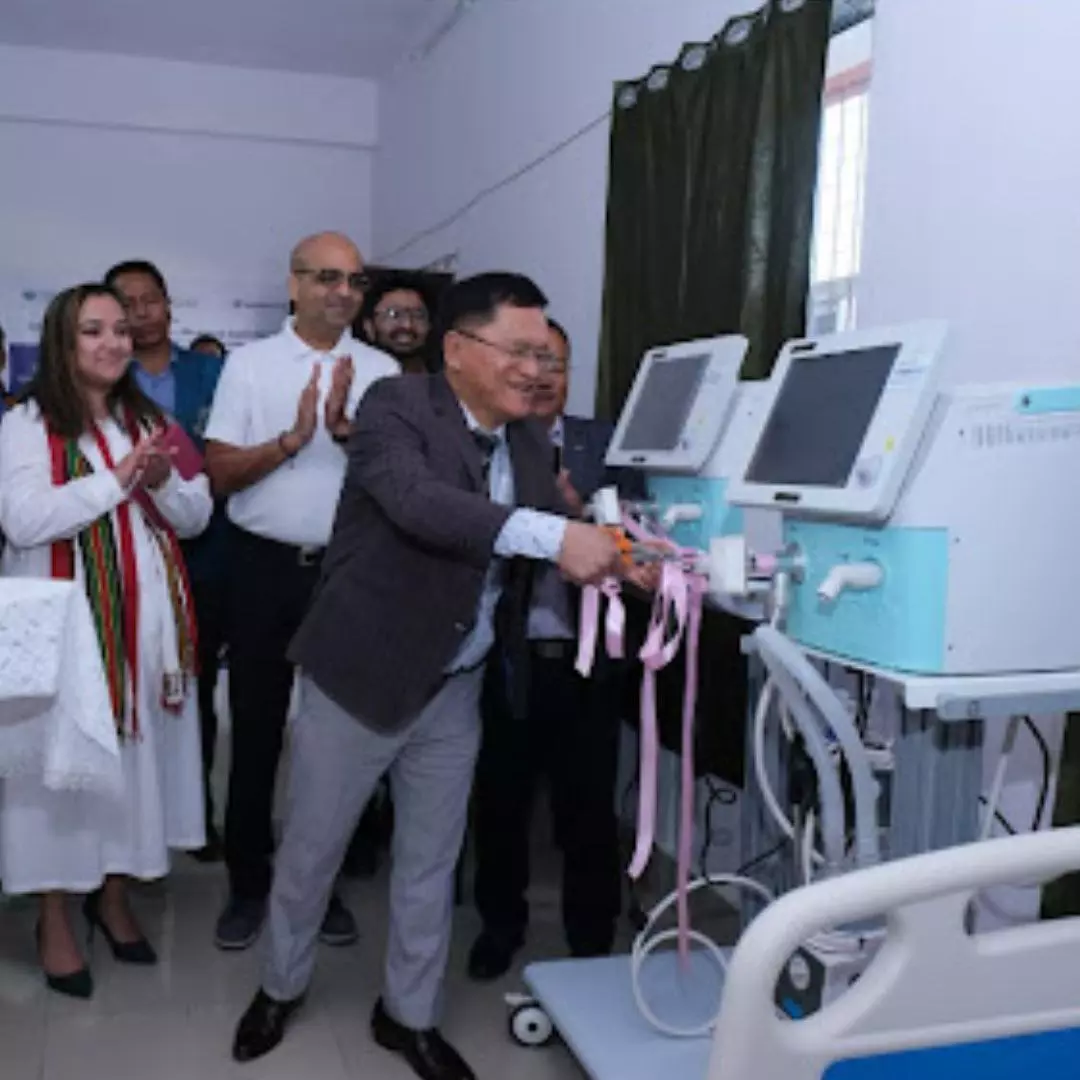
Image Credits: Mission ICU
How Mission ICU Is Building Critical Care Facility In Rural Hospitals
India, 22 April 2023 3:38 AM GMT
Editor : Ankita Singh |
A literature lover who likes delving deeper into a wide range of societal issues and expresses her opinions about the same. Keeps looking for best-read recommendations while enjoying her coffee and tea.
Creatives : Ankita Singh
A literature lover who likes delving deeper into a wide range of societal issues and expresses her opinions about the same. Keeps looking for best-read recommendations while enjoying her coffee and tea.
By establishing ICUs in small towns and rural areas, Mission ICU, a social initiative, seeks to increase critical care capacity in rural areas and bring them up to speed with the urban centers.
Every nation's economic health always hinges on having a solid, effective, and well-organized healthcare system, and it serves as a foundation. And when the foundational element is put under extreme and unforeseen stress, the system tends to collapse.
This is what the pandemic has done to healthcare systems worldwide, including India. When situations like the pandemic emerged, major flaws and discrepancies in our country's present system were exposed.
While the entire nation experienced one of the most devastating medical crises ever faced by humankind, the wrath of the second wave was unimaginable. The situation for tier-2, tier-3 cities, and rural areas when compared to the metro cities. While many individuals and social organizations came forward to help bridge the urban-rural divide, the efforts were mostly limited in scope.
Mission ICU, a non-profit project, was one such project through which under-resourced hospitals' infrastructure was improvised. This project has been ongoing since the second wave of COVID-19.
Founded by Dr Ashwin Naik, Maanoj Shah, and Dr Edmond Fernandes, it has already garnered support from various organizations and private donors to rapidly scale up ICUs in rural areas.
Critical Care Infrastructure
When asked about the motivation behind Mission ICU, Manoj Shah co-founder, told The Logical Indian, "We started at the peak of the second wave, which exposed the rural critical care infrastructure needed in our country. The grave inequality of healthcare infrastructure among rural hospitals compared to urban areas alarmed us to work on a problem that has been at the center of focus for years.”
According to the founder, the primary focus is to build a strong foundation of critical care infrastructure in under-resourced rural hospitals. At the same time, the foundation also aims to bridge the urban-rural gap by strengthening the preparedness of rural hospitals for any future health emergency.
While rural India accounts for 70% of India's population, there was a need to focus on tier 3 areas where access to good healthcare was difficult.
One major problem the foundation faces is finding remote and under-resourced hospitals. Till now, they have been able to reach remote hospitals in various districts of Karnataka, Maharashtra, Odisha, Jammu Kashmir, Tamenglong, Kamjong, Pherzawl, Manipur, Mizoram, and even Arunachal Pradesh.
To bring rural areas up to speed with urban areas, rural medical infrastructure must include well-equipped hospitals, specialist clinics, diagnostic facilities, and ambulance services. Furthermore, medical education and training programs can help train local healthcare providers and encourage them to practice in rural areas. A comprehensive strategy is needed to enhance the medical infrastructure in rural areas, as timely access to medical care is critical during an emergency.
Mission ICU has emerged as a long-term solution to bridge the urban-rural divide in the healthcare system. Their goal is to reach1000 ICU beds across 100 locations.
"We plan to reach out to the most remote parts of the country and build a strong foundation of critical care infrastructure in under-resourced hospitals," he said
Further, Shah shared with The Logical Indian, "Additionally, with our experience on the ground identifying hospitals, conducting necessary due diligence, and involving corporate partnerships, we aim to build a knowledge source and a playbook that helps other organizations take up this cause and execute it independently or with the support of team Mission ICU."
Currently, they are working on expanding their reach and continuing to identify beneficiary hospitals that require assistance. They recently completed their northeast launch, which included 9 locations spread across five northeast states. Their primary objective is to build long-term capacity so that India is better prepared to deal with current or future health emergencies.
Also Read: Recent Study Indicates Legalizing Same-Sex Marriage In India Could Help Reduce Anxiety
 All section
All section













